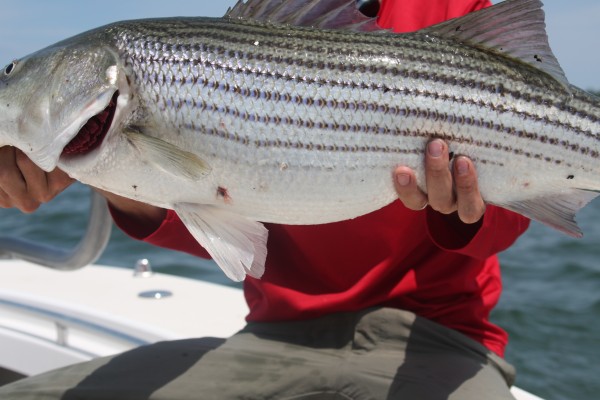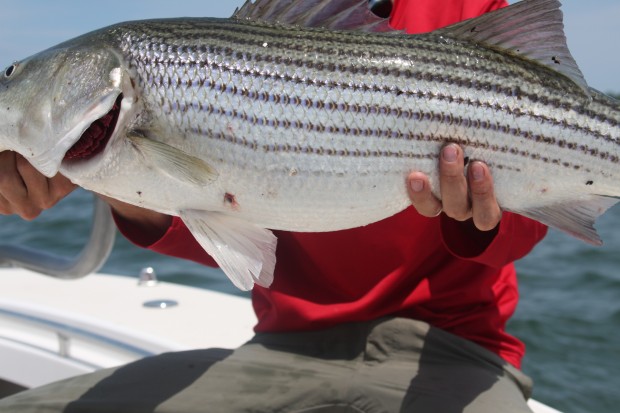By Gary Reich for Soundings
[dropcap]B[/dropcap]y the time you read this, many folks’ weekends will be revolving around Sunday pro football games or indoor projects, not fishing or boating. Here on Chesapeake Bay, the majority of anglers hang up their rods and reels well before the end of the catch-and-keep striped bass season in December. And in the interest of full disclosure, I’m not a huge fan of being out on the water when there’s a biting chill to the air.
Despite the cold, plenty of anglers will fish through the season for big wintering striped bass on the Chesapeake. The most successful of them target warm-water discharges near electrical power plants, water treatment facilities and other industrial sites where the Bay is 8 to 12 degrees warmer. One such place that’s a huge draw for winter anglers is the Calvert Cliffs Nuclear Power Plant, about 10 nautical miles out and around Cove Point from the mouth of the Patuxent River. Known locally as “The Rips,” this place has an outflow of water — 1 million to 2 million gallons per minute — that is a haven for wintering stripers. Big ones.
Striped bass don’t relish really cold water. During the coldest parts of winter, in fact, stripers often seek out the deepest holes in the Bay, where temperatures are generally higher than they are at the middle and upper levels of the water column. The bad news? Finding fish in these holes and then getting them to hit a lure or fly can be an aggravating challenge, especially when you’re up on the surface freezing your digits off. Luckily, striped bass holding in warm-water discharges are often much more cooperative — and aggressive.

The option to hit winter stripers at the warm water outflow can provide opportunities for large adult fish. Photo: A. Derr
The Rips
Though the water released from the Calvert Cliffs plant is no more than 10 to 12 degrees warmer than the Bay waters around it, stripers — and the forage fish they eat — are attracted to it. A plus is that the water is discharged at such a rate as to create a ripping current. Those who have done any striped bass fishing know that moving water is an essential ingredient to success. Warmer water temps plus current … you do the math.
Fishing The Rips is challenging for several reasons. First, as I mentioned, as much as 2 million gallons of water rushes from the pipe every minute, a flow that can create an exhilarating boat ride, especially if the wind is from the east. Standing waves can occur, so an alert and focused skipper is a must. Second, you’ll almost never be alone at The Rips, which means you’ll need to politely shimmy your way into a conga line of boats waiting for the two- to three-minute ride in the current. Third, the bottom is littered with large rocks — and probably thousands of lures that have been lost here. It’s not a matter of whether you’ll get snagged and lose gear, but how often.


